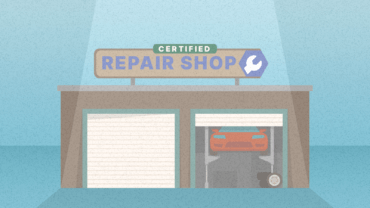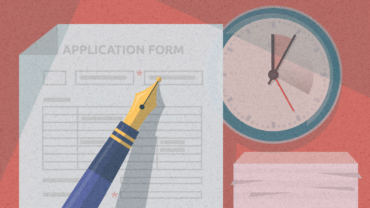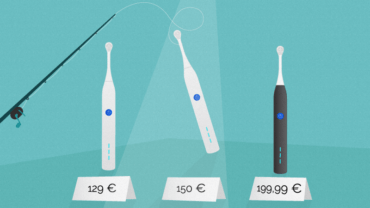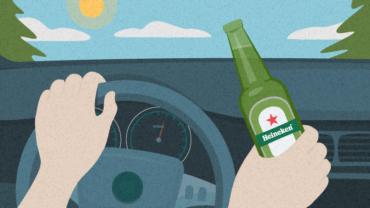Andrea Olson: How to Learn What Customers Need but Don’t Tell You
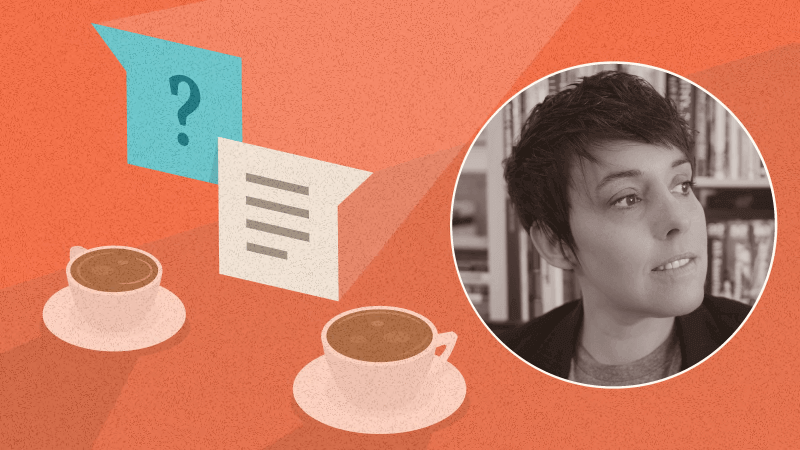
Andrea Olson, CEO of Pragmadik, talks about her new book What To Ask: How to Learn What Customers Need but Don’t Tell You.
In this interview, you’ll discover:
- How to change organizational mindset to achieve a better understanding of customer needs;
- What’s the 3W Ideation process; and
- What organizations need to change in order to grow effectively.
Tell our readers a bit about your background.
I began my career at a tech startup fresh out of college. Learning on the fly and without a net, I helped build a company from $10k in seed monies to a multi-million-dollar organization in only 8 years. In that time, I learned everything essential to grow a successful business, from sales to coding to accounting.
I then moved onto a new role as the first female corporate executive at a $700m global manufacturing company, leading digital strategy, marketing & communications. Managing 10 business units across 12 countries garnered me the opportunity to study customer behavior across varying cultures. This sparked my focus on research and study in the burgeoning field of behavioral science and economics.

Discover ground-breaking ideas and fascinating solutions.
Over the next 10 years, I continued to expand my education, including at the University of Toronto and the Rochester Institute of Technology, building on my foundation in Psychology and Communications from the University of Iowa.
I then went on to establish the first customer-centricity and behavioral science consulting firm in Iowa, now working with a wide range of multi-billion-dollar organizations across the financial, insurance, non-profit, and A/C/E industries.
I am also the executive producer of two TEDx programs in the Midwest and serve as a speaker coach and consultant for other TEDx programs across the country. Lastly, I am an instructor for the University of Iowa Venture School, a guest lecturer, and startup coach for the Tippie College of Business Startup Incubator.
That’s quite an impressive background. I understand you have a new book coming out, titled, What To Ask: How to Learn What Customers Need but Don’t Tell You. Can you share a bit about your inspiration for this?
It bourgeoned from coming up against a very repetitive problem – understanding customers hidden needs. There was no clear and flexible framework to enable teams to think outside of their own perspective.
Traditional brainstorming didn’t work – it just recycled basic and un-novel ideas. Customer feedback alone didn’t work – teams didn’t understand how to interpret or dissect their input.
Traditional brainstorming didn’t work – it just recycled basic and un-novel ideas. Customer feedback alone didn’t work – teams didn’t understand how to interpret or dissect their input. In addition, they couldn’t weigh the input – what was a great, innovative concept they could run with, that would also generate revenue and differentiation for the organization?
I realized that it wasn’t process, but mindset – helping teams get out of their own way by thinking bigger and more abstractly. Through extensive research and testing, I invented the 3W Ideation™ process for helping teams discover new ways to grow by studying customer context, motivators, and biases.
We’re all about understanding biases and how they can be better understood to change customer behavior. How does this process work?
It helps you shift organizational mindsets to create a clear understanding of customer perspectives and contexts. In short, it helps you uncover customers’ whys and whats to create a wow idea to take to market.
It helps you shift organizational mindsets to create a clear understanding of customer perspectives and contexts. In short, it helps you uncover customers’ whys and whats to create a wow idea to take to market.
You see, all companies need innovations to better differentiate from competitors. Yet hyper focusing on what we (the organization) need prevents us from seeing what customers need. We need to tackle the problem from the customer’s perspective. This starts with designing a Query. It is the starting point for this mental shift.
It is a tool to reframe your team’s mindset away from internal needs to external opportunities. It creates a mental bridge between your current offerings and the larger environment that impacts and influences customer decisions. The Query itself doesn’t generate new product or service ideas (this comes later in the process) but does tee up a series of catalysts from which new opportunities are drawn.
The Query structure consists of two simple parts: audience and offering. For example, a Query could be “Why would Millennials (audience) want/need a mortgage (product/service offering)?” Look how this Query alone starts changing your thinking. When we ask, “Why would Millennials want or need a mortgage?” it gets you considering catalysts—the impetus for action or behavior change— rather than solely the function of the product offering itself.
This is the overarching premise of the 3W Ideation process. There are a few more steps to it, but in essence, it begins with changing mindsets.
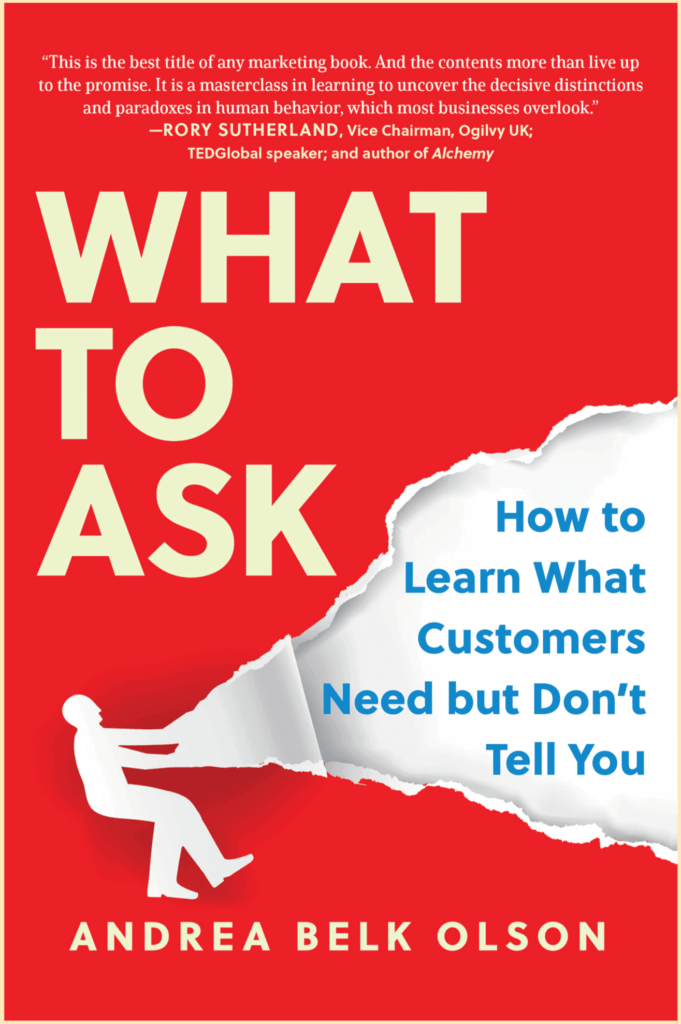
Source: What To Ask: How to Learn What Customers Need but Don’t Tell You
Can you share a bit more about your new book, and what it covers beyond the 3W Ideation process?
Happy to. The book is designed in thirds.
The first third sets the foundation for getting you and your organization in the right headspace, helping you understand those influencing factors that inhibit efforts to shift your company’s focus on the customer. It is essential to absorb and internalize the obstacles you’re facing, as any attempts at change without knowing these will fall short.
The second third talks about the how—specific strategies, methods, and tactics for gathering, understanding, and applying customer insights super effectively.
The last third is all about translating customer insights into the language of business: how to convert knowledge into measurable returns. Regrettably, most business books don’t include this critical part, giving you only reams of case studies, and leaving you to your own devices to connect the dots.
Then there’s the epilogue. This was included for a single purpose— giving you the inspiration and confidence needed to take what you’ve learned and implement it. We often read inspiring works, but rarely do they become something we use in our companies.
If you don’t apply this new knowledge, it’s not worth much. You’ll also find little Easter eggs throughout the footnotes. I find footnotes boring and rarely ever read them. So, it was high time to make them better. Some footnotes will provide additional clarification to specific terms and phrases, but many will be a running commentary, including a bit of humor and snarky quips.
One last question that we like to ask all our guests. What do you believe is the most important thing organizations need to change to effectively grow?
Their understanding of human behavior.
We like to try to convince people using data and logic, but as we know, most decisions are made based on emotion rather than logic. There needs to be much more attention given to behavioral economics, psychology, and sociology in business. I think executives will benefit incredibly from this knowledge and expertise.
Find out more about Andrea’s new book here.
